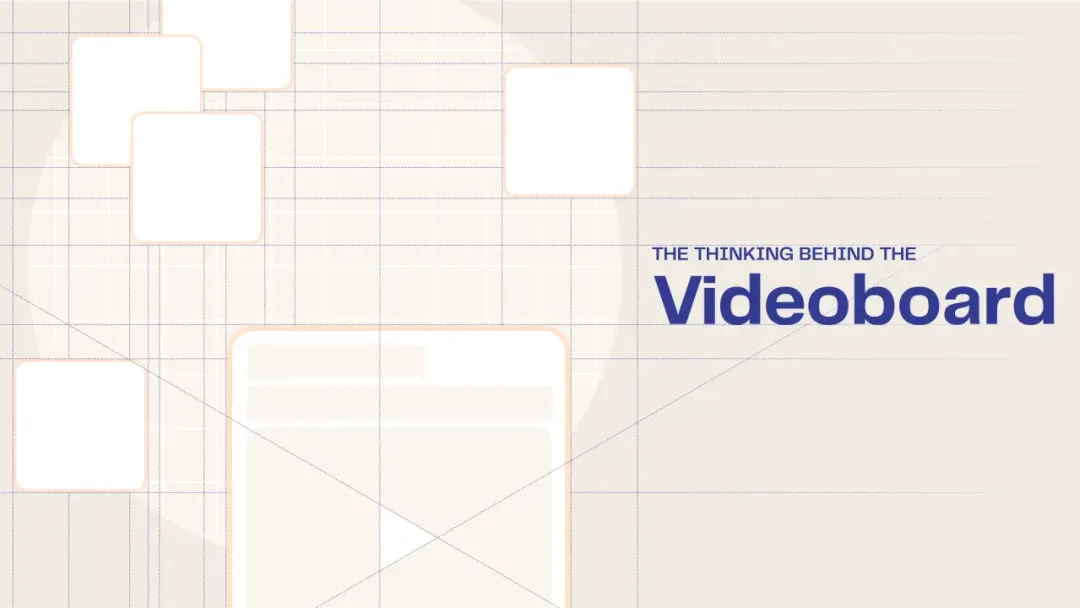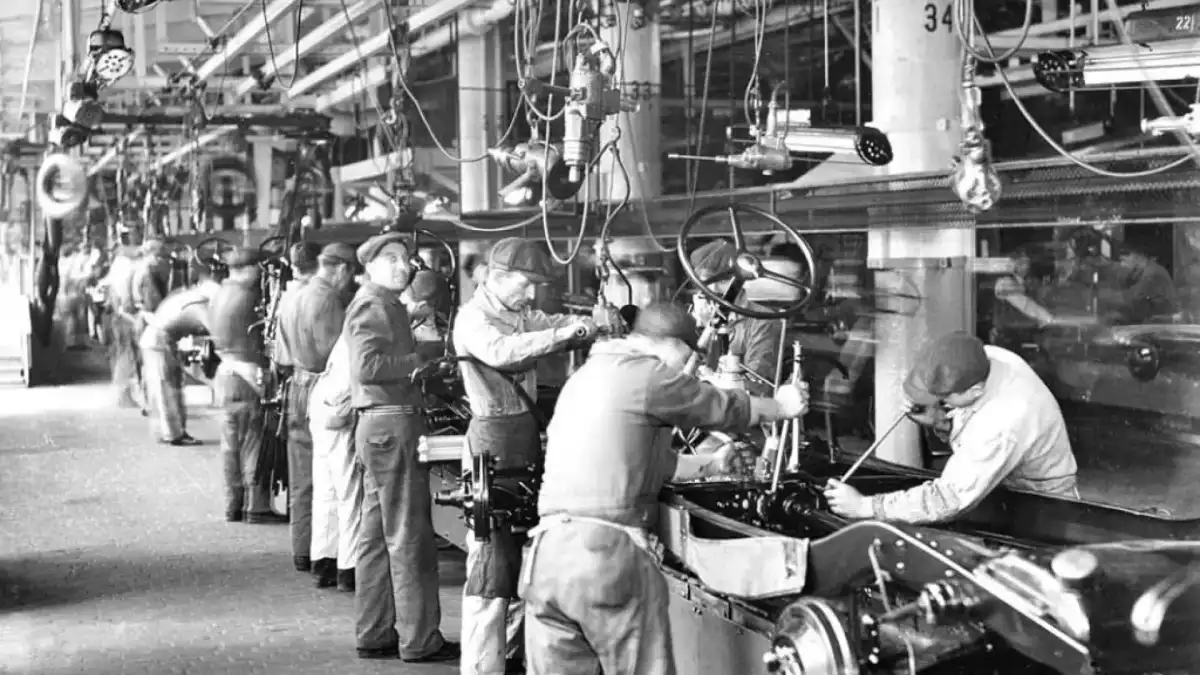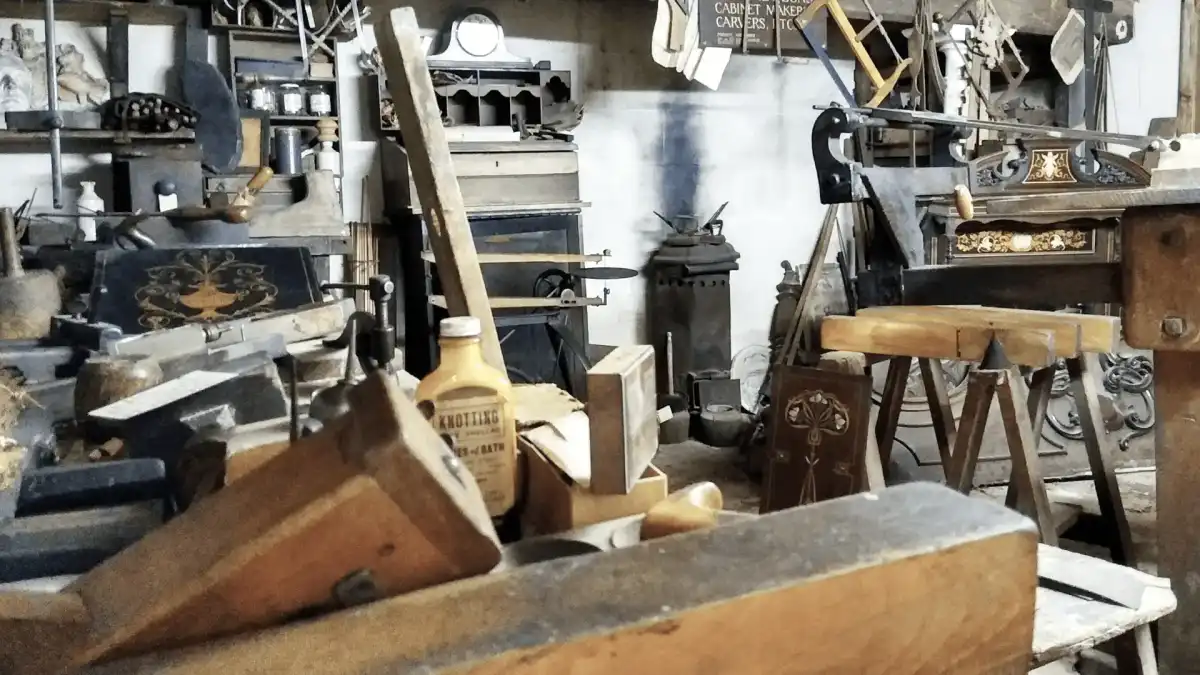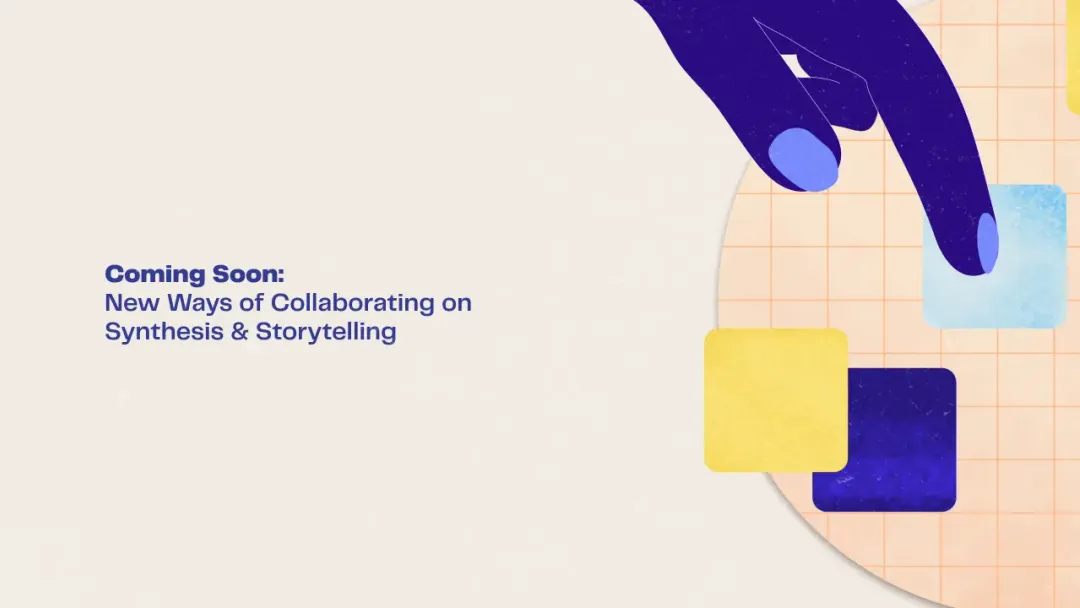The Thinking Behind the Videoboard
May 2022
·
11 min read

We recently released an exciting new feature into beta, the Reduct Videoboard. We wanted to share some of the thinking that went into building it and that continues to guide our work as we further polish and evolve it.
Foundational Ideas
Reduct is built on the core idea that connecting video of human speech with its transcript, word-for-word, phoneme-by-phoneme, allows you to benefit from the richly emotive qualities of video, while also tapping into the analytic and introspective characteristics of the written word. This offers a user the best of both worlds, as it eliminates the choice between an exclusively oral or written form. We believe that a huge amount of meaning and value remains trapped inside video, and this connection makes the meaning inside findable and accessible.
Furthermore, the ability to rapidly deconstruct recordings—each potentially hours in length—into Highlights, and to (re)construct a new narrative from those fragments, makes it possible to not just access or extract meaning from video, but to actively tell stories of your own with it.
This connection of spoken and written word, the deconstruction and reconstruction of recordings, and the use of transcript text as the primary interface of working with time-based media, transforms a previously heavy and awkward medium into something lightweight and fluid.
Two Worlds
Structured tools
There is a class of software tools that bring order to the material it is used to work with.
These tools include software as diverse as Excel and Google Sheets, Airtable, Trello, and transcript-and-taxonomy tools from the social sciences such as NVivo and Atlas.ti. Tools in other domains fit this model, including software such as Lightroom, which allows photographers to work with large libraries of photos using metadata, or note-taking systems such as Zettlekasten and any number software applications that provide a framework for writing and organizing notes.
Reduct has, up to this point, broadly belonged to this world; it is transcript-based and features Highlights presented in a list, which can be filtered by tags and other metadata.
Tools of Chaos
In an entirely different universe to that of spreadsheets and taxonomies, there is a set of tools that is optimized for a very different mode of cognitive function. These are tools not for a world of structure and order, but for ambiguity and chaos. In many cases where we want to benefit from such ambiguity, we fall back on analogue tools - often as simple as pen and paper. For many people, sticky notes are the pinnacle of this world.
Sticky notes hold a special significance in late 20th century work. They have become invaluable tools for collaboration and a cliché of innovation: a stock photo of people pointing at sticky notes indicates that thoughtful collaboration is occurring, and innovation is imminent.
They combine several uniquely useful characteristics, not least of which being that they are just the right size to hold a “thought's-worth” of writing. Clive Thompson puts it well when he describes their specialness as “the wild flexibility of assembling, sorting, and just kinda beholding the stuff you’ve got, and lingering over it to make sense of it.” He adds,“You know exactly the set of verbs you’ve got: Grab, move, stick, write, move, crumple, toss, move.”

Whiteboards have long been common in places where people solve problems, from classrooms to research labs to startups and large corporate offices. Like sticky notes, they allow the user to quickly and easily externalize their thinking, and make it simple to correct mistakes or try alternative approaches.
So-called “virtual whiteboards” have become incredibly popular over the past couple of years, particularly as teams that may have previously gathered in the same physical spaces have had to rapidly adjust to working remotely. Tools such as Miro, Mural, and Figjam, which closely mimic the affordances of in-person collaboration to which teams were accustomed, and lean heavily on the metaphor of the sticky note as primary object, have been enthusiastically adopted. Together with video conferencing software such as Zoom, these tools have enabled research synthesis and collaborative workshops to continue. New behaviors and habits have emerged as people adapt to these new ways of working and as the software evolves.
Observed workarounds
Overall, structured tools don’t play nicely with spatial ones, resulting in a gap that takes effort and ingenuity to overcome if you want to switch to other modes of collaborating and organizing in the middle of a project. This is a common nuisance of many types of knowledge work.
Again and again, our customers described the elaborate workarounds they developed to move between these worlds and to get their data from Reduct into spatial tools in order to collaborate and synthesize… and then back again when it was time to tell the story of what they found. This process often involved marathons of copy-pasting, or exporting and importing CSV files—only to end up feeling distant from their data during synthesis. Inevitably, they experienced the frustration of identifying just the right quote to communicate an insight, only to find that once they found the timecode and dug up the source material, the intonation or body language captured in the footage told a slightly different story than the one they wanted to tell.
The Videoboard challenges the need for choice, and it changes the way you work. It brings various ways of working into a single tool, allowing you to adjust your stance as required, without the friction of switching platforms or patching together tools that aren’t intended to fit together.
The Theory

In his classic book, Understanding Media, Marshall McLuhan describes media as being either Hot or Cold. Hot media is high definition, complete, and whole (e.g., a movie; print), whereas cold or cool media leaves things open-ended and open to interpretation (comics, phone calls). Hot media is opaque, inert, and too hot to handle; cold media invites debate, completion, and participation. Videoboard is a tool that cools the temperature of your footage, which might be considered hot when whole, but when fragmented and spread on a two-dimensional plane, can safely and productively be handled. By bringing your material to this cooler state, the Videoboard serves as a surface for exploration and experimentation. The temperature is turned up again when the fragments are reconstituted into new narratives, and Reduct’s other tools, such as the Reel editor, or traditional video editing software such as Premiere or Davinci Resolve, are built to handle them in that state.

The Videoboard is an environment built for “genploration,” a term coined in the 1992 book Creative Cognition. Genploration is a “Complex interplay between ‘generative’ and ‘explorative’ activities, giving rise to ‘preinventive structures.’” Christensen summarizes in “Sticky Notes as a Kind of Design Material”: “the critical element of all preinventive structures is that they are initially produced without full anticipation of their resulting meaning and interpretation. In this way, preinventive structures should be viewed as distinct from finalized creative products.” Preinventive structures are viewed as possessing six inter-dependent properties that can encourage exploration and discovery, and may result in creative outcomes. These properties are...
“(i) novelty, with greater novelty affording greater possibilities for creative discovery;
(ii) ambiguity, which provides opportunities for creative interpretation;
(iii) implicit meaningfulness, which serves to inspire new and unexpected interpretations;
(iv) emergence, which engenders unanticipated attributes and relations;
(v) incongruity, which involves conflict or contrast that can encourage exploration to expose deeper meanings and relations; and
(vi) divergence, which relates to the capacity to facilitate the discovery of alternative uses, meanings and interpretations.”
With the Videoboard, we have created an interface that allows you to work with Reduct primitives, their relationships, and their aggregate meaning in a “pre-inventive” fashion—without immediately anticipating or committing to a specific interpretation or end result. The Videoboard is an inherently interstitial environment, neither ideally suited for working with entirely raw materials, nor for forming final outputs, but for working with thoughts situated somewhere in between.
Interaction Model and Metaphors

There is often a tendency, particularly in the business world, to make work feel orderly and legible to an outsider; to generate a sense of predictability and control in our often unpredictable world. But not all work benefits from being made to look orderly; in fact, some of the most valuable knowledge work is deeply inscrutable, and, while in progress, relies on ambiguity and apparent chaos to work; this is particularly the case with the “interstitial” work described previously, when the thinking involved is in a pre-inventive state. This explains the seemingly messy boards full of sticky notes that proliferate in workspaces around the world (and, of course, the archetypal “crazy wall” of detective shows and films).
We wanted to create a tool that offers the affordances necessary to work with video data in messy and flexible ways, and still benefit from the structures underpinning a project in Reduct. The metaphors of the sticky note and whiteboard were good starting points, especially because so many people are familiar with them and their virtual interpretations. But we did not want to simply mimic sticky notes and whiteboards for the sake of it, or to rebuild a tool that already existed. We knew we could never recreate the very specific and embodied experience of standing in a room with a team and being able to glance at a group of sticky notes to assess in an instant the fruits of collaboration. At best, we’d create a poor facsimile of the experience.
Instead, we wanted to build a tool that enables the transition between order and chaos and back again, without losing fidelity or adding unnecessary friction along the way. A tool that allows you to focus on the real work, on what truly matters, so your synapses can fire freely. A tool that draws connections and clarifies. We wanted to build a tool that, although inspired by and borrows from the metaphors of sticky notes and whiteboards, takes advantage of being digital, and creates something that could never exist in physical form, or be made by anybody else. A tool that is elemental of Reduct, technically and conceptually.
The interaction model of the Videoboard is primarily one of direct manipulation. Much like a real sticky note, the actions available to you are simple: Drop a pile onto the board, grab one, move it, open it, label it with a tag, move it again, delete it. Most of the same verbs apply to a selection of objects just as they do to a single one. Where the actions available to you are more complex ("play in sequence"), and where being more explicit about what is going to happen is helpful ("add 7 items to Reel"), we show a contextual menu of actions, as close as possible to the object or objects being acted upon. This menu adjusts depending on what you have selected, and, just like other menus elsewhere in Reduct, shows you if there are keyboard shortcuts for working more efficiently, if you prefer. We hope these basic affordances will create a foundational mental model we can build and expand upon over time.
By leaning on the metaphors of a sticky note to represent your data, we intend both to create an immediate familiarity, but also to make apparent how one might act on and use the interface. We aspire to Verplank’s description of how computers represent information: “The best representations are compact and extensible, efficient and widely available.” By combining these representations, simple affordances, and straightforward actions, we hope to have created a “tool for thought” in the tradition of Rheingold’s book of the same name.
In Practice

In any well-used woodworking shop, there are big tools—a circular saw, a bench drill press—and smaller ones—hammers, screwdrivers, wrenches. But there are also countless jigs. Some are reused across projects and shared between users of the shop; others are used exactly once, by one person, for one task. We want the Videoboard to become as personal and as fit-for-purpose as the materials a carpenter uses to make a woodworking jig.
Our aim was to create a tool that was adaptable on an ongoing basis, for a wide range of projects, and to offer sufficient flexibility that its uses might stretch beyond what we imagined while building it. The scenarios we have kept in mind during development have been sense-making, particularly the process called “synthesis” by designers and user researchers; storytelling, either of research insights or with the needs of documentary filmmakers top of mind; and creating an environment suited for collaboration, immersion, and the presentation of thoughts-in-progress. These key use cases certainly determined the Videoboard beta we are releasing, but we are most excited by the uses beyond our imaginations; enabled by the affordances we’ve put in place, but not designed for directly.
Accessing the Videoboard
The Videoboard is live right now—in beta form, and while in beta, it is available for all Reduct users. If you already use Reduct, you can access the Videoboard using the link shown next to your profile icon in the top right of the screen. We are working to more closely integrate the Videoboard with the rest of the Reduct application, and are excited by the possibilities suggested by having an alternate interface exist side-by-side as a different but equal way to work with your footage of human speech, so keep an eye out for that.
If you are not already a Reduct user, you can sign up for a free trial or request a demo today, and experience the power of our transcript based editor, and dive into the Videoboard.
References and Further Reading
- Ball, L., Christensen, B., Halskov, K. "Sticky notes as a kind of design material: How sticky notes support design cognition and design collaboration," Design Studies, Volume 76, 2021. https://doi.org/10.1016/j.destud.2021.101034
- Bush, V. “As We May Think,” The Atlantic, 1945. https://www.theatlantic.com/magazine/archive/1945/07/as-we-may-think/303881/
- Engelbart, D. “Toward augmenting the human intellect and boosting our collective IQ,” Communications of the ACM, 1995. http://dougengelbart.org/pubs/books/augment-133150.pdf
- Erickson, T. “Working with Interface Metaphors,” in The Art of Human Interface Design, ed. Brenda, L., 1990.
- Ferster, B. “Idea Editing: Previsualization for Feature Films,” POST Magazine, 1998. http://www.stagetools.com/previs.htm
- Fielding, R. “Recent Electronic Innovations in Professional Motion Picture Production,” Journal of Film and Video, 36(2), 1984, 43–72. http://www.jstor.org/stable/20687604
- Finke, R., Smith, S., Ward, T. Creative Cognition: Theory, Research, and Applications. MIT Press, 1992.
- Jansen, Y. Physical and Tangible Information Visualization, PhD Dissertation, Université Paris-Sud, 2014.
- Kay, A. “User Interface: A Personal View,” in The Art of Human Interface Design, ed. Brenda, L., 1990.
- Kolko, J. “Abductive Thinking and Sensemaking: The Drivers of Design Synthesis,” Design Issues, MIT Press, 26 (1), 2010. http://www.jonkolko.com/writingAbductiveThinking.php
- Lasky, A. Slipstream, a data rich production environment, thesis, Massachusetts Institute of Technology, Dept. of Architecture, 1990. https://dspace.mit.edu/handle/1721.1/68242
- Matthews, B., Khan, A., Snow, S., Schlosser, P., Salisbury, I., Matthews, S. “How to do things with notes: The embodied socio-material performativity of sticky notes,” Design Studies, 76, 2021. https://doi.org/10.1016/j.destud.2021.101035
- Matuschak, A. & Nielsen, M. “How can we develop transformative tools for thought?,” Numinous Productions, 2019. https://numinous.productions/ttft/
- McCloud, S. “The ‘Infinite Canvas,’” 2009. scottmccloud.com/4-inventions/canvas/
- McKim, R. Experiences in Visual Thinking, 2 Ed., Brooks/Cole Publishing Co., 1980.
- McLuhan, M. Understanding Media: The Extensions of Man, McGraw-Hill, 1960.
- Rheingold, H. Tools for Thought: The People and Ideas Behind the Next Computer Revolution , Simon & Schuster, 1985.
- Rubin, M. Droidmaker: George Lucas and the Digital Revolution, Triad Publishing Co., 2006.
- Saldaña, J. The Coding Manual for Qualitative Researchers, 3rd Ed., Arizona State University, 2015.
- Shneiderman, B. & Maes, P. “Direct Manipulation vs. Interface Agents,” Interactions, 4 (6), 1997, 42–61. https://doi.org/10.1145/267505.267514
- Shneiderman, B. Direct Manipulation: A Step Beyond Programming Languages, University of Maryland, 1983.
- Thompson, C. “13 Ways of Looking at a Post-It,” Forge/Medium, 2021. https://forge.medium.com/13-ways-of-looking-at-a-post-it-note-6d72cd035c7d
- Verplank, B. Interaction Design Sketchbook, 2008. http://billverplank.com/CiiD/IDSketch.pdf
- Walker, R. “An Ode to the Whiteboard, Corporate America’s Least Appreciated Office Tool,” Forge/Medium, 2021. https://marker.medium.com/an-ode-to-the-whiteboard-corporate-americas-least-appreciated-office-tool-c84adf243dfd
- Wilf, E. "The Post-it Note Economy: Understanding Post-Fordist Business Innovation through One of Its Key Semiotic Technologies," Current Anthropology Volume 57, Number 6, 2016. https://doi.org/10.1086/688952
- Yuille, J. The forensic wall: how ambiguity and affinity are enacted to perform interaction design, PhD Dissertation, RMIT University, 2012. https://researchrepository.rmit.edu.au/view/delivery/61RMIT_INST/12246772450001341/13248400260001341

